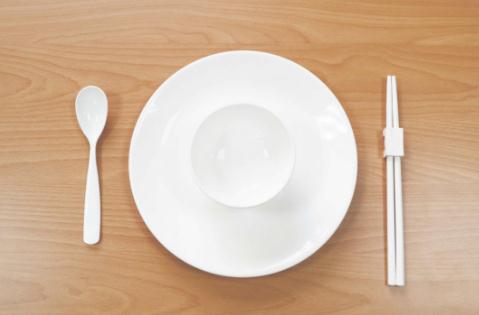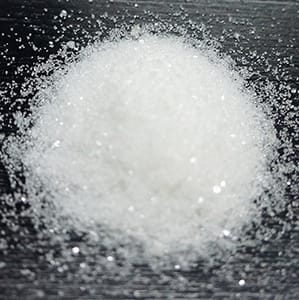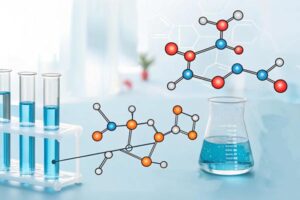Concept and degradation mechanism of biological degradable polymer materials
The biodegradable polymer material refers to a polymer material that degrades under the action of the microbes or their secretions under certain times and certain conditions.
The mechanism of biodegradability roughly the following three ways:
- Biological cell growth causes mechanical damage of the substance;
- Microbes produce new substances to polymers;
- Direct effects of enzymes, that is, microbial eroding the polymer, resulting in cracking.
It is generally believed that biodegradable polymer materials are carried out through two processes. First, the microbial secretes hydrolase, binds to the surface of the material, and the polymer chain is cut by hydrolysis, and a compound having a molecular weight of less than 500 is formed. The degradation product is then intimate in the human body, and through various metabolic routes, converting into the energy of microbial activity, ultimately converting to water and carbon dioxide.
Therefore, biodegradable is not a single mechanism, but a complex biological physics, biochemical synergistic, mutual promotion of physical chemistry. So far, the mechanism of biological degradability has not been fully elaborated.
In addition to biodegradable, degradation of polymer materials in the body is also described as biore absorption, biological erosion, and biological deterioration. The decrease in biodegradable polymer materials is related to the material itself, and is also related to the material temperature, enzyme, pH, microorganisms and other external environments.
Main types of biodegradable materials
1. Polylactic acid (PLA): PLA has non-toxic and non-irritable, good biocompatible, high strength, good processability, biodegradable. PLA made sheets, fibers, films through heat molding, spinning Silk, and other fields are widely used in packaging, textile and medical, etc., which can be decomposed into water and carbon dioxide by microorganisms.

2. Polyhydroxy fatty acid ester (PHA): PHA is a cellular polyester synthesized from many microorganisms, which is a natural polymer biomaterial, with good biocompatibility, biodegradability and plastic. Thermal processability can be used as biomedical materials and biological degradable packaging materials.
3. Polybut dikariniol ester (PBS): Excellent PBS comprehensive performance, reasonable cost performance, an extremely wide range of applications, can be used in packaging, cutlery, cosmetic bottles, medicinal bottles, disposable medical supplies, agricultural films, pesticides and chemicals Release material, biomedical polymer materials and other fields.
4. Polyxylolide (PCL): PCL In addition to the characteristics of thermoplastic easy processing, there is also a characteristics of biodegradability, biocompatibility, temperature control memory, etc., which is mainly used as a controllable drug carrier. Fully degraded medical materials such as plastic surgical suture.
The development of biodegradation plastics industry is facing five difficulties
The first is that the technology is not mature, and the performance of degradation of plastic products cannot fully meet various consumer needs. Although there are many biological degradation plastics in the market, each material itself is only protruding on one side, and the comprehensive performance has such shortcomings. Some catering applications made of biodegradable plastics are far from traditional plastic products in terms of heat, water and mechanical strength.
At present, there is already a corresponding solution for partial degradable plastic performance. For example, polycondensation organisms degrade plastics (eg, PLA, PHA, PBAT, PET, PET, PBT, etc.) tend to be more hydrolyzable, and the addition of hydrolysis stabilizers are commonly used. The hydrolyzing stabilizer can be reacted with an endboxex, an endamine group, and a terminal hydroxyl group generated during hydrolysis of the polymer to form a stable harmless product to effectively prevent further reduction in the chain. There are many kinds of substances that can be used as hydrolyzed stabilizers, such as monomeric carbodiimide or polymerized carbodiimide, isocyanate, oxazoline compounds, epoxy compounds, and other substances that terminate hydrolysis.

The second is a cost problem. The price of biodegradable plastic products is difficult to compete with petroleum base products, which requires a continuous reduction in production costs and product prices through technological progress.
The third is the lack of strong policy or legal regulations. In foreign countries, the Government has supported the development of biological degradation plastics industry through the establishment of special development funds, tax concessions, and the current support of China has gradually strengthened. Macroeconomic policy support has increasingly, but lacking rules, not for production enterprises. development of.
The fourth is the shortcomings of corporate funds and difficulties in financing. China’s biological degradation plastics enterprises are not large enough, and the return cycle of biological degradation plastics industry has exceeded the desired design, which has produced insufficient corporate funds and difficulties.
The fifth is that the evaluation system is still not perfect. Biodegradation plastics are emerging industry. After many materials and products have been developed, there is no such product standard, bringing many inconveniences and disputes to trade.






